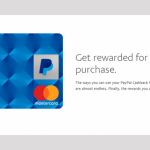
The ability to securely communicate in real-time is a key feature of today’s collaborative work environment.Riot, a secure messaging solution designed to bring online collaborations into a single space, has just launched promising to make this as simple and effortless as possible.
The public availability of Riot comes after a successful beta where the application was tested for the ability to create a shared workspace for the web, making it more than a messaging app.
Vector Creations, the company responsible for the app, initially built Riot for developers as a free and open source software. It has evolved into a secure, interoperable, open source and decentralized environment real-time messaging product that is readily available on the web, the App Store, Google Play, and F-Droid.
The goal for the Riot team was to make getting in touch with someone as simple as possible by making it transparent. Additionally, they believed everything should be carried out in a single app, whether you are looking to communicate with your colleagues, customers, suppliers or anyone else.
With Riot, you can control the communication from beginning to end because it is built on Matrix, an open standard for decentralized persistent communication, the company says. Matrix can be used to power Instant Messaging, VoIP/WebRTC signaling, Internet of Things communication and tracking conversation history with a standard HTTP API for publishing and subscribing to data.
By defining the standards, Matrix helps create new communications solutions, as well as extend the capabilities of existing ones. What this means for users is, it provides a solution that lets you communicate with virtually anyone without having to worry about what app or server they are using and by letting you choose whichever app or server you want. It also makes it possible to use a neutral identity system like an e-mail address or phone number to discover people to talk to.
The feature rich capability of Matrix has been implemented in Riot so teams can share data and collaborate on projects across different communication apps and third party tools. So the old days of siloed systems and the limitations they imposed are over, the company says. The bridging to external networks such as Slack, IRC, Twitter and RSS (and soon Skype, Google Hangouts, and Lync) makes it possible for team members to keep using their preferred messaging app, no matter what it is.
Secure Messaging is Needed
But being able to communicate without limitations is not enough in this highly dangerous digital environment, the developer adds. Security is just as important. Riot has an interoperable, end-to-end encryption that only users can decrypt. The advanced and open source cryptographic ratchet of Matrix’s Megolm platform delivers, according to the company, the only collaboration environment which is decentralized and encrypted end to end.
Some of the key features of Riot include:
- Group chat, VoIP and video calling,
- App bridging — bringing together users from disparate networks,
- Integrations with productivity tools and bots,
- Easy onboarding — includng invites to room participants via email or optional Riot account sign up,
- Customizable notifications volume controls, and
- Easy to use file transfer and file management.
The messaging is space is crowded. And in almost every instance these platforms are propriety based solutions that require all of their users to have the same platform. As the way people communicate continues to evolve without being limited to location, time, device, and application, the solution Riot provides seems, at first glance, timely.
Amandine Le Pape, Head of Product for Riot, addressed this very issue in a release announcing Riot’s official launch Sept. 20 saying, “Despite all this activity, there really hasn’t been a go-to solution for cross-team collaboration since email, which clearly has huge drawbacks. Riot eventually brings the ubiquity of email to chat whilst also providing the mandatory features for today’s collaboration: integrations, bots, security, calls … Riot is more than a messaging app: it’s a shared workspace for the web.”
[“source-smallbiztrends”]




